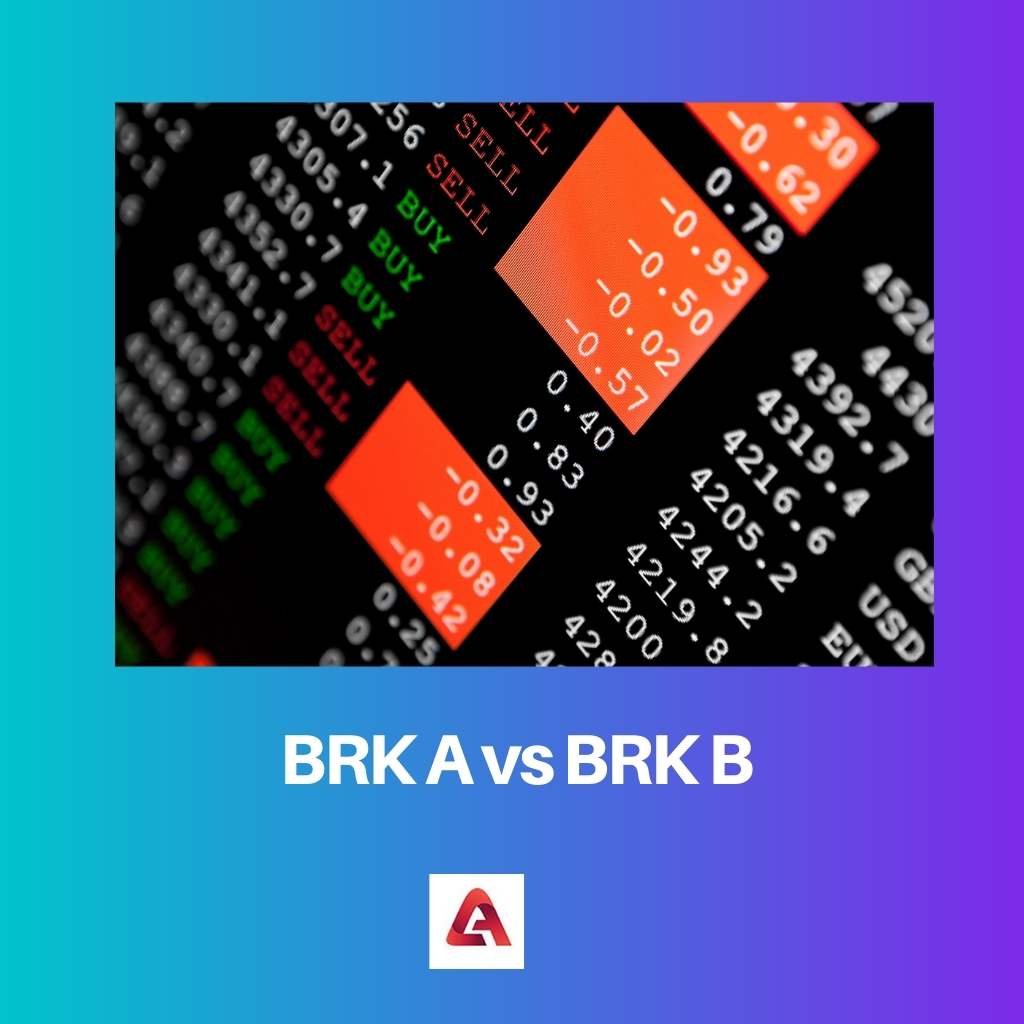There are two ways to invest in Warren Buffett’s Berkshire Hathaway: Class A shares (BRK-A) and Class B stock (BRK-B) (BRK-B). Both forms of stocks provide you access to the well-known corporation, but there are some key distinctions between them.
Key Takeaways
- BRK.A shares are Berkshire Hathaway’s Class A shares, while BRK.B shares are its Class B shares.
- BRK.A shares have more voting rights than BRK.B shares, offering greater control in company decisions.
- BRK.A shares are more expensive than BRK.B shares, making them less accessible to individual investors.
BRK A vs BRK B
The difference between BRK A and BRK B is the price of the share. Investors might benefit from additional flexibility and a potential tax benefit by purchasing Class B shares. Warren Buffett has stated that there would never be a stock split for Class A shares because he feels the high share price attracts like-minded investors who are interested in the long gains rather than short-term price fluctuations.

BRK Class A shares also have lower upfront costs for bigger investments, making them a better option for high-net-worth individuals.
Property and casualty insurance and reinsurance, utilities and energy, banking, manufacturing, retailing, and services are only some of the businesses that the holding company is involved in.
Preferred stock, also known as BRK B, is shares of a company’s stock that pay dividends to owners before common stock distributions are paid out.
Preferred investors have a right to be compensated for the business’s assets before common stockholders if the company goes bankrupt.
Before ordinary shareholders may get their dividend payments, BRK B stock contains a clause that requires the corporation to pay all dividends, even those that were previously withheld.
Comparison Table
| Parameters of Comparison | BRK A | BRK B |
|---|---|---|
| Voting Right | BRK A has more voting right | BRK B has less voting right |
| Dividend | BRK A has a higher dividend | BRK b has a lower dividend |
| Sold | These types of shares are not sold to the public | These types of shares are sold to the public |
| Classification | The BRK A cannot be divided into further parts | BRK B is divided into 2 parts are 1.Holder option 2. Common stock |
| Conversion | BRK A can be converted easily to BRK B | BRK B is very difficult to convert to BRK A |
What is BRK A?
The fact that Berkshire Hathaway did not elect to divide its stock is the primary reason for its high price.
As a consequence, its value from each share has increased in tandem with both the holding firm’s massive expansion so over the years, even though it is currently the most “expensive” publicly traded stock.”
Class A shares offer lower expense ratios and levy upfront fees, making them preferable for lengthy shareholders.
A BRK A denotes a share of ownership. This is the ownership of a firm in the context of investment. The number of shares (or divisions of ownership) issued by the firm determines the degree of ownership.
When a corporation wants to raise money, it sells shares to the broader public, including us.
If it is issuing shares for the first time, it does so through an initial public offering (IPO), which is preceded by a prospectus that tells us all we need to know about the company.
What is BRK B?
Buffett introduced Class B shares (BRK-B) in 1996, allowing people to invest in Berkshire Hathaway for one-thirtieth the price of a Class A share of stock at the time.
The ratio was one-1,500th after a 50-to-one stock split in 2010. Class B shares have less right to vote than Class A shares.
The objective of the Class B shares, according to Buffet, was to allow smaller investors to invest directly in Berkshire Hathaway instead of just indirectly via mutual fund schemes that reflect Berkshire Hathaway’s assets.
BRK B shares, which are not BRK A shares, are also referred to as ordinary shares. The holder of BRK B can vote on the firm and its products.
These dividend payments are guaranteed, although they are not always paid on time. Dividends in arrears are unpaid dividends that must legally be paid towards the actual owner of a stock today of payment.
A holder of such a sort of BRK B may receive additional remuneration (interest) on occasion. Any firm can use equity shares as a long-term funding source. These are non-redeemable shares that are issued to the general public.
Shareholders have the right to vote, share earnings, and claim a company’s assets. BRK B value can be stated in a variety of ways, including par value, face value, book value, and so on.
As a BRK B shareholder, you are entitled to a portion of the company’s income in the form of dividends.
It’s worth noting that when a company makes a profit, its administration does have the option of either reinvesting the money in the firm for development and/or expansion or selling the company.
Dividends should be paid to investors as a portion of earnings. The board of directors makes this choice, and stockholders have no say in the matter.
Main Differences Between BRK A and BRK B
1. At any moment, Class A shares can be changed into an equal number of Class B shares. But Class B shares cannot be changed into an equal number of Class A shares
2. The performance of BRK A is very good in the market, but the performance of BRK B is not good in the market.
3. BRK A share is not used for the gift purpose, but BRK B shares may also be used for the gift purpose.
4. BRK A-shares have less liquidity in the market, but BRK B shares have greater liquidity in the market.
5. BRK A share has less stock equity, but BRK B has high stock equity.



